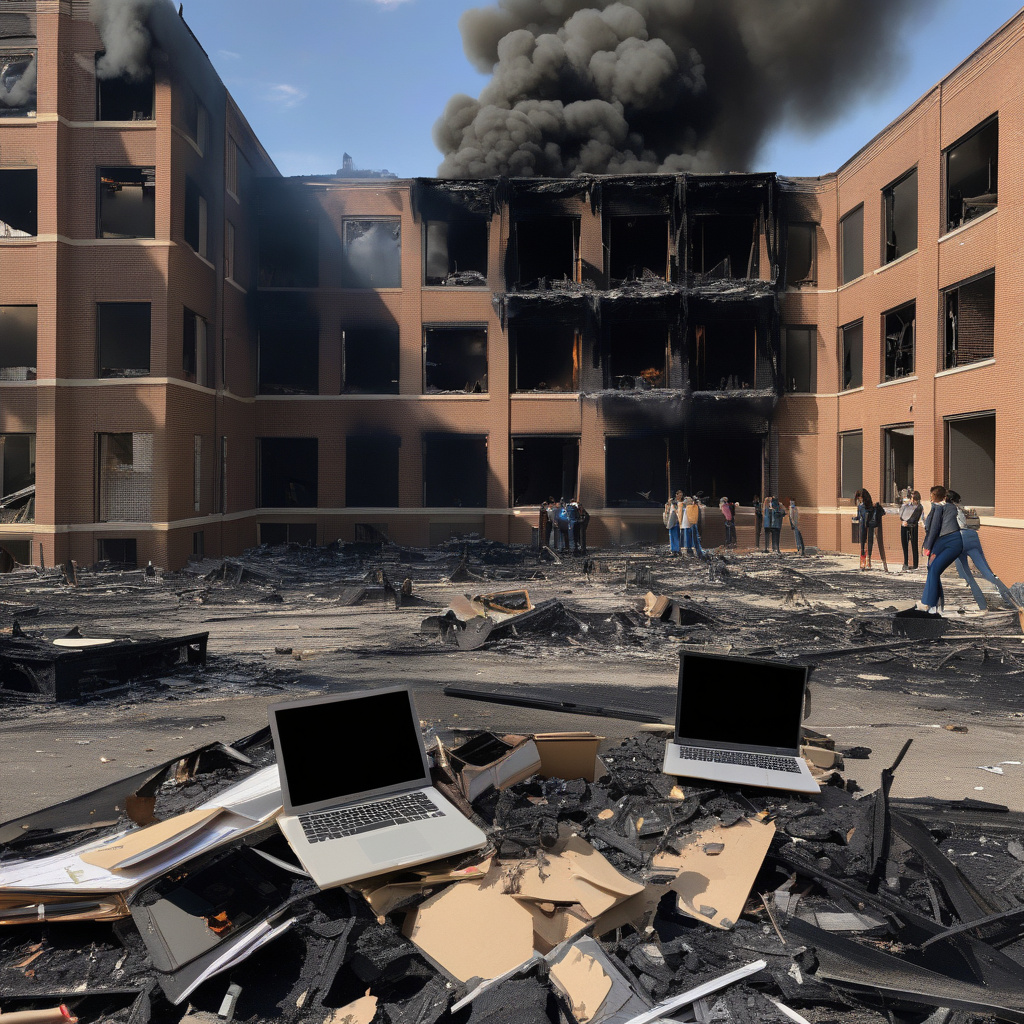When Social Media Trends Turn Dangerous: The Impact of Viral Challenges on Today’s Youth
Do you remember when social media trends were harmless, like the Mannequin Challenge? Well, those days seem long gone as a new wave of viral challenges is taking over the internet and putting lives at risk. Recently, a TikTok challenge has emerged where students are encouraged to destroy school property, particularly laptops, for views and likes. What may seem like innocent fun is turning into a dangerous trend with real-life consequences.
The allure of social media fame has led many young people to engage in risky behaviors, all in the name of going viral. In the case of the laptop destruction challenge, students are not only causing damage to school property but also putting themselves and others in harm’s way. Reports of school fires breaking out due to this reckless behavior have raised alarms among educators, parents, and authorities.
The question arises: What drives young individuals to participate in such destructive challenges? The answer lies in the psychology of social media validation. In today’s digital age, where likes and views equate to popularity and influence, many are willing to go to extreme lengths to gain online recognition. The instant gratification of seeing their videos go viral overshadows any thoughts of the potential consequences of their actions.
As the trend continues to spread across social media platforms, it is essential for parents and educators to educate young people about the importance of responsible online behavior. Teaching digital literacy and critical thinking skills can help empower youth to make informed decisions when faced with harmful challenges. Additionally, fostering open communication about the dangers of seeking validation through risky antics is crucial in shaping responsible digital citizens.
Moreover, social media companies have a role to play in combating dangerous trends on their platforms. By implementing stricter guidelines and monitoring harmful content, these platforms can help mitigate the spread of challenges that pose a risk to individuals and communities. Collaborating with educators and experts in child psychology can further enhance efforts to promote a safer online environment for users of all ages.
It is evident that the impact of viral challenges on today’s youth goes beyond the virtual world and into real-life scenarios with serious repercussions. The need for collective action from parents, educators, authorities, and social media companies is paramount in addressing this growing concern. By working together to promote digital responsibility and safety, we can help prevent future incidents of destructive challenges and protect the well-being of our youth.
In conclusion, the viral TikTok challenge that involves destroying laptops for views is a stark reminder of the dangers posed by irresponsible social media trends. By understanding the motivations behind such behavior, promoting digital literacy, and fostering collaboration among stakeholders, we can work towards creating a safer online environment for all. Let us prioritize the well-being of our youth and strive to steer them away from harmful challenges that jeopardize their safety and future.
SocialMedia, ViralChallenges, OnlineSafety, YouthWellness, DigitalResponsibility









